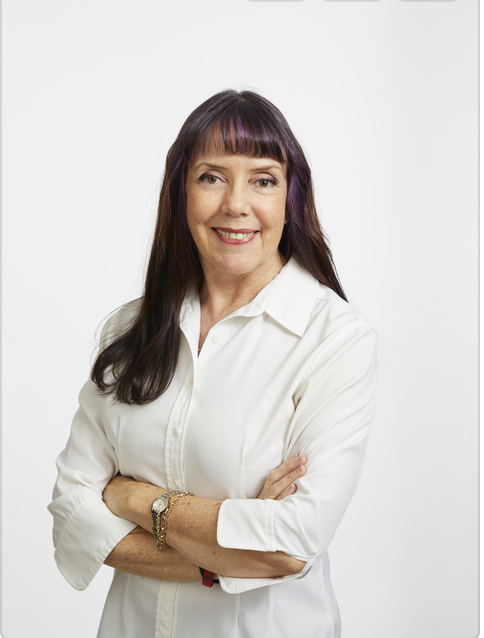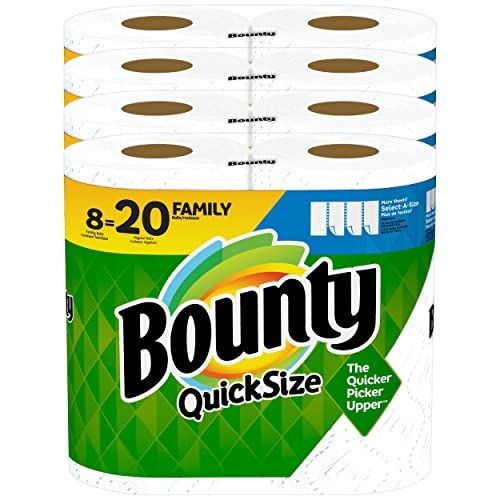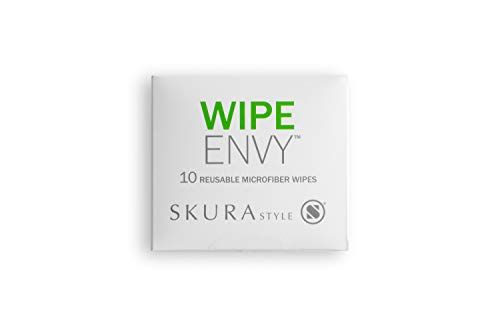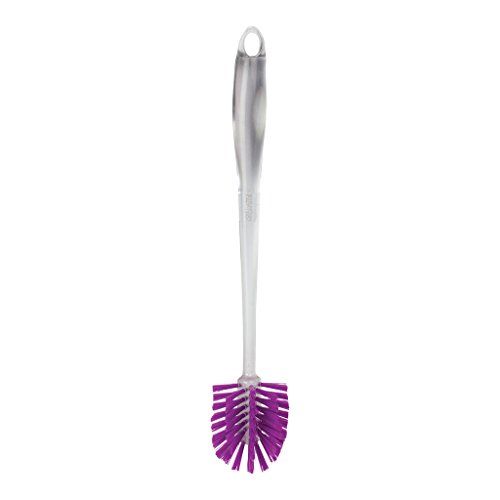Your air fryer is probably one of your favorite kitchen appliances, and it comes in so handy to cook foods fast and without excessive oil. Think about crisped-up fish sticks or chicken wings with no added oil, and perfect al dente zucchini noodles, and leftovers reheated to perfection.
That said, air fryers need to be cleaned after every use. Even after using minimal or no added oil, food bits and grease can accumulate and cause your air fryer can smell or even begin to smoke. Whether you use a basket-style or tray air fryer, here are the best cleaning tips from the Good Housekeeping Institute to make cleaning it a breeze.
How to clean an air fryer basket
What you’ll need:
- Degreasing dish soap
- Soft-bristled bottle brush
- Soft cloth or paper towel
- Turn off and unplug the air fryer, and allow it to cool completely. Pull out the drawer and remove the basket or tray.
- If your air fryer is dishwasher-safe, place the drawer and basket or tray, depending on what your air fryer has, upside down in the dishwasher, preferably on the top rack, if it fits.
- If using the dishwasher is not an option, wash the removable parts in warm soapy water and use the brush to scrub off gunk and get into the vents and nooks and crannies of the tray while protecting the metal or nonstick finish. Rinse well and dry.
- Wipe down the bottom interior of the air fryer, as well as the exterior, with a damp cloth or paper towel. Replace the basket once clean.
Cleaning Lab Tip: Use the top rack of the dishwasher (space-permitting) where it is further away from heat and is exposed to gentler water jets – this will help the nonstick finish last longer.
How to clean an oven-style air fryer
What you’ll need:
- Degreasing dish soap
- Soft-bristled bottle brush
- Soft cloth or paper towel
- Turn off and unplug the air fryer, and allow it to cool completely.
- Remove the racks and either use the dishwasher to clean them, or hand wash them in warm soapy water using your dish brush to scrub away grease and food bits. Rinse well and dry.
- Empty any oil from the drip tray – but don’t flush it down the sink. The tray can be placed upside down in the dishwasher to clean it, or hand wash it, then rinse it well and dry.
- Wipe down the bottom interior of the air fryer, as well as the exterior, with a damp cloth or paper towel. Replace the trays once clean.
Cleaning Lab Tip: If the drawer or drip tray has any oil in the bottom, don’t flush it down the kitchen sink. Instead, empty it into a can or small jar and keep the container in the fridge to throw away when it’s full.
How to deep clean an air fryer
If you accidentally overstuffed your air fryer (or cooked something extra splattery), you might have gunked up the heating element. If your air fryer smells bad while you’re cooking, or starts to smoke, there’s probably baked-on residue on or near the heating element.
What you’ll need:
- ½ cup of baking soda
- A few tablespoons of water to make a paste
- Soft dishcloth or paper towels
- Remove the basket or racks first, and clean them.
- Leave it upright so any bits of gunk you brush off will fall onto the bottom of the interior and not get caught in the mesh, heating element or fan at the top.
- Use a clean, dry, soft-bristled brush to scrub and release burned-on bits from the mesh covering the heating element, and wipe with a damp clean cloth or paper towel. Then, turn the air fryer upside down to make it easier to clean the heating element.
- Use the baking soda paste and a soft damp cloth, and gently scrub away the grime.
- Rinse the cloth with water, wring it out and wipe away the residue. Flip the air fryer right-side up and replace the clean basket and/or trays.
Cleaning Lab Tip: Overfilling the air fryer will almost certainly guarantee the heating element will need cleaning. To prevent this chore, make sure the quantity of food you’re cooking at one time doesn’t exceed the amount that’s recommended for your model of air fryer.

Contributing Product Analyst
Lynn Redmile (she/her) is a contributing product reviews analyst at the Good Housekeeping Institute, where she’s been evaluating beauty, textiles, home, pet and cleaning products since 2012. She brings over 30 years of data analysis experience to the role. When she’s not managing testing data, you’ll find Lynn photographing jazz musicians, dancing and traveling to experience new cultures and food.
Kitchen Appliances & Innovation Lab Director
Nicole (she/her) is the director of the Good Housekeeping Institute‘s Kitchen Appliances and Innovation Lab, where she has overseen content and testing related to kitchen and cooking appliances, tools and gear since 2019. She’s an experienced product tester and recipe creator, trained in classic culinary arts and culinary nutrition. She has worked in test kitchens for small kitchen appliance brands and national magazines, including Family Circle and Ladies’ Home Journal.




